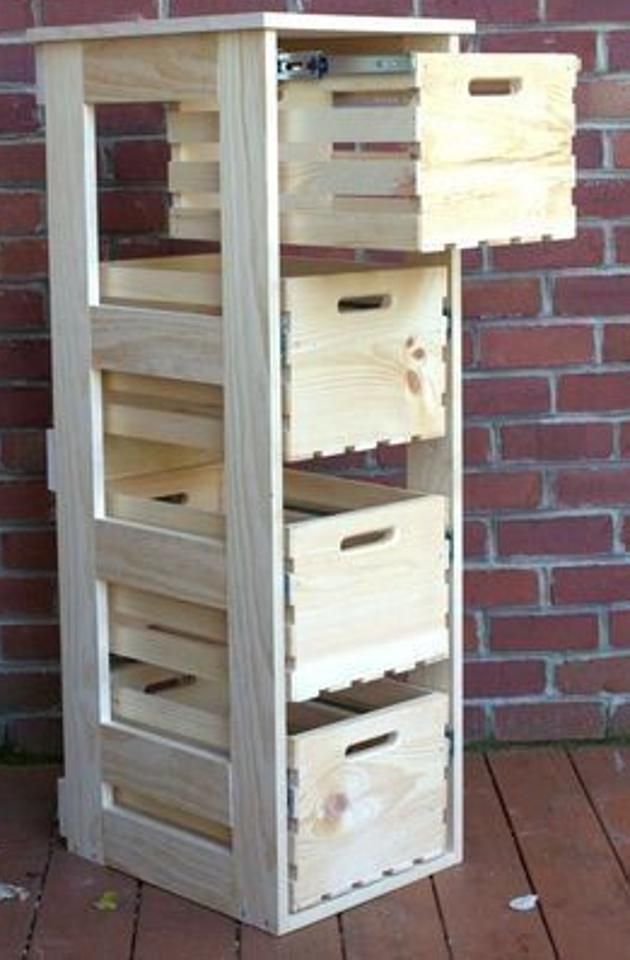Have you ever looked up at a beautifully crafted ceiling and wondered, “What is the woodwork at the ceiling called?” The woodwork on a ceiling is not just a functional element but also plays a crucial role in enhancing the aesthetic appeal of a space. From intricate carvings to simple wooden beams, ceiling woodwork has been used for centuries to add character and charm to interiors.
The use of woodwork on ceilings dates back to ancient times when it was primarily utilized for structural support and insulation. Over the years, it has evolved from a purely functional component to a design feature that can transform the look and feel of a room. Today, ceiling woodwork comes in various styles, including coffered ceilings, exposed beams, and ornate molding, each adding its unique touch to a space.
In this article, we will delve into the history of ceiling woodwork, explore different types and designs, highlight the benefits of having woodwork on the ceiling, discuss the installation process, provide maintenance tips, and showcase stunning examples from around the world. Whether you are considering adding woodwork to your ceiling or simply curious about its significance, this comprehensive guide will provide you with valuable insights into this timeless architectural element.
History of Ceiling Woodwork
Ceiling woodwork, also known as coffered ceilings, has a long and rich history that dates back to ancient civilizations. The use of woodwork on ceilings was prevalent in cultures such as ancient Rome, Greece, and Egypt. It was originally used not only for aesthetic purposes but also for structural support. The intricate designs and patterns carved into the woodwork were symbols of wealth and status, showcasing the craftsmanship and artistry of the civilization.
Throughout history, the style and design of ceiling woodwork have evolved significantly. In the Renaissance period, coffered ceilings became a popular architectural feature in European buildings. The designs became more elaborate and detailed, incorporating elements of Greek and Roman architecture. During the Baroque era, ceiling woodwork reached new heights with grandiose designs adorned with ornate decorations.
One of the most notable evolutions in ceiling woodwork occurred during the Arts and Crafts movement in the late 19th century. This period emphasized craftsmanship and natural materials, leading to a resurgence in the use of wooden beams and panels on ceilings. Today, we see a fusion of traditional and modern styles in ceiling woodwork, with contemporary architects and designers pushing the boundaries of creativity with innovative takes on this timeless architectural element.
- Ancient civilizations
- Renaissance period
- Baroque era
- Arts and Crafts movement
- Modern interpretations
Overall, understanding the history of ceiling woodwork allows us to appreciate its cultural significance and enduring appeal. From its origins as a symbol of wealth and status to its evolution as a key element in architectural design, the use of woodwork on ceilings continues to captivate people around the world.
Types of Ceiling Woodwork
When it comes to ceiling woodwork, there are various styles and designs that can be used to enhance the aesthetic appeal of a room. From traditional to modern, the type of woodwork chosen can significantly impact the overall look and feel of the space. Here are some popular types of ceiling woodwork:
- Coffered ceilings: This type of woodwork features sunken panels in a grid pattern, often with decorative molding, creating a sense of depth and architectural interest.
- Tray ceilings: Tray ceilings have a center section that is higher than the surrounding areas, typically with recessed lighting or other decorative elements to draw attention to the design.
- Beam ceilings: Exposed wooden beams can add warmth and texture to a room, whether in a rustic farmhouse style or as part of a more contemporary design.
Each style offers its own unique charm and character, allowing homeowners to choose the best fit for their interior design preferences. The versatility of ceiling woodwork allows for customization based on personal taste and the overall theme of the room.
In addition to these popular styles, there are also various designs that can be incorporated into ceiling woodwork such as intricate patterns, geometric shapes, or even custom carvings. The possibilities are endless when it comes to using woodwork on ceilings, making it a versatile and timeless choice for interior design. And interestingly enough, each type has its unique set up process contributing to its longevity over time.
Whether you’re aiming for a classic look or want something more contemporary, it’s worth exploring different styles and designs before deciding on the perfect ceiling woodwork for your space. Ultimately this all depends on what is more appealing in terms of aesthetics but also functionality since each one will bring different sound/acoustic qualities inside rooms.
Benefits of Ceiling Woodwork
The woodwork at the ceiling is not only an aesthetic addition to a room but also provides several benefits in terms of insulation, acoustics, and overall atmosphere. Many homeowners and interior designers are now recognizing the advantages of having woodwork on the ceiling and are incorporating this feature into their designs.
In terms of insulation, wooden ceilings can help regulate the temperature within a room. Wood has natural insulating properties that can help keep spaces warmer in winter and cooler in summer. This can lead to energy savings by reducing the need for excess heating or air conditioning. Additionally, wooden ceilings can provide sound insulation, minimizing noise transfer between rooms or from external sources.
Acoustically, wood has the ability to absorb sound waves, reducing echoes and creating a more pleasant auditory environment. This is particularly beneficial in commercial spaces such as restaurants, cafes, or event venues where controlling noise levels is essential for customer comfort.
Aesthetically, the warmth and texture of wood create a cozy and inviting ambiance in any room. The natural beauty of wood adds character and charm to a space, making it visually appealing. With various types of wood available in different finishes and colors, homeowners have the freedom to choose a ceiling woodwork design that complements their interior decor style.
| Benefit | Description |
|---|---|
| Insulation | Wooden ceilings offer natural insulating properties that regulate indoor temperatures. |
| Acoustics | Wood absorbs sound waves, offering effective noise reduction. |
| Aesthetics | The warmth and texture of wood provide visual appeal and create a cozy ambiance. |
The Process of Installing Ceiling Woodwork
When it comes to installing woodwork on the ceiling, there are several important steps to follow in order to achieve a beautiful and functional result. From choosing the right materials to the actual installation process, each step is crucial in creating a stunning ceiling design. Here is a step by step guide on how woodwork is installed on the ceiling.
Preparation and Planning
Before starting the installation, it’s essential to carefully plan and prepare the area where the woodwork will be installed. This includes measuring the dimensions of the ceiling and determining the amount of wood needed for the project. Additionally, any existing ceiling materials such as drywall or plaster may need to be removed in order to properly install the woodwork.
Choosing the Right Wood
The next step involves selecting the type of wood that will be used for the ceiling woodwork. Factors such as durability, aesthetics, and budget should all be taken into consideration when making this decision. Popular choices for ceiling woodwork include cedar, pine, oak, and cherry among others.
Installation Process
Once all preparation has been completed and the wood has been chosen, it’s time to start the installation process. This typically involves attaching wooden beams or planks to the ceiling using nails or screws. Careful attention should be paid to ensure that each piece is level and properly aligned with adjacent pieces. In some cases, decorative molding or trim may also be added for a more ornate look.
By following this step by step guide for installing woodwork on your ceiling, you can create a stunning aesthetic feature that adds warmth and character to any room in your home. Now that you know what is involved in installing ceiling woodwork from start to finish, you can confidently take on this project knowing exactly what needs to be done.
Maintenance and Care for Ceiling Woodwork
The maintenance and care for ceiling woodwork are essential to ensure the longevity and aesthetics of the woodwork. Over time, dust, dirt, and other particles can accumulate on the woodwork, diminishing its beauty. Regular cleaning and proper preservation techniques can help maintain the quality of the ceiling woodwork.
To clean the woodwork on the ceiling, start by dusting the surface with a soft cloth or duster. This will help remove any loose dirt or debris that has settled on the wood. For more stubborn dirt or grime, a mild cleaning solution made of water and a gentle soap can be used. Be sure to wring out the cloth thoroughly to avoid excess moisture from seeping into the woodwork.
Preserving the woodwork on the ceiling is equally important in maintaining its appearance and structural integrity. Applying a high-quality wood polish or wax can protect the wood from drying out and cracking. It also enhances the natural luster of the wood, giving it a beautiful sheen. Additionally, regular inspections for any signs of wear or damage are crucial in addressing any issues before they escalate.
Proper care and maintenance are key to ensuring that your ceiling woodwork remains beautiful and durable for years to come. By following these tips, you can keep your woodwork looking as stunning as it did when it was first installed.
| Maintenance Tips | Care Tips |
|---|---|
| Regular dusting with a soft cloth or duster | Apply high-quality wood polish or wax regularly |
| Use a mild cleaning solution for stubborn dirt | Inspect for signs of wear or damage regularly |
Best Wood Species for Ceiling Woodwork
When it comes to choosing the best wood species for ceiling woodwork, there are several factors to consider. The type of wood used can significantly impact the overall aesthetic and durability of the ceiling. Additionally, different wood species have varying characteristics that may make them more or less suitable for use in ceiling woodwork.
Characteristics of Different Wood Species
Each wood species has its own unique characteristics, such as hardness, grain pattern, and color. For example, oak is known for its strength and prominent grain pattern, while cedar is prized for its natural resistance to insects and decay. Understanding these characteristics can help homeowners and builders make informed decisions when selecting the best wood species for their ceiling woodwork.
Suitability for Indoor Use
Another important factor to consider when choosing a wood species for ceiling woodwork is its suitability for indoor use. Some woods are more prone to warping or expanding in response to changes in humidity and temperature. It’s essential to select a wood species that is well-suited for interior applications in order to ensure the longevity and stability of the ceiling woodwork.
Popular Wood Species for Ceiling Woodwork
Some of the most popular choices for ceiling woodwork include pine, cypress, cherry, maple, and mahogany. Each of these woods has its own distinct advantages and can be used to achieve different aesthetic effects. For example, cherry is known for its rich color and smooth texture, while pine offers a light and knotty appearance. By understanding the unique properties of each wood species, individuals can choose the best option for their specific design preferences and structural requirements.
Examples of Stunning Ceiling Woodwork
In conclusion, the woodwork at the ceiling is not only a functional aspect of a building’s structure but also holds immense aesthetic value. Throughout history, ceiling woodwork has evolved from simple beams to intricate designs that add character and charm to any space. Whether it’s a rustic exposed beam or an ornately carved coffered ceiling, the use of woodwork on ceilings has been a timeless design element that continues to be popular in modern architecture.
The benefits of having woodwork on the ceiling are numerous, from insulation and acoustics to adding warmth and beauty to a room. The process of installing ceiling woodwork may vary depending on the design and type of wood chosen, but proper maintenance and care can ensure its longevity. Additionally, there is a wide range of wood species that are suitable for use in ceiling woodwork, each with its own unique characteristics and aesthetic appeal.
Ultimately, stunning examples of ceiling woodwork can be found all around the world, showcasing the versatility and creativity of this architectural feature. From traditional wooden beams in historic European buildings to intricately carved patterns in Asian temples, the beauty of ceiling woodwork knows no bounds.
These examples serve as inspiration for homeowners, designers, and architects alike, highlighting the endless possibilities when it comes to incorporating woodwork into ceiling design. Therefore, whether it’s adding warmth to a modern living space or preserving the historical charm of a heritage building, ceiling woodwork will continue to be admired and appreciated for generations to come.
Frequently Asked Questions
What Is Woodwork on the Ceiling Called?
Woodwork on the ceiling is commonly referred to as “ceiling beams” or “ceiling joists.” These are wooden elements that are used for structural support or decorative purposes in a room.
What Do You Call the Trim on the Ceiling?
The trim on the ceiling is known as “crown molding” or simply “ceiling trim.” This decorative feature helps to transition between the walls and the ceiling, adding visual interest to the space.
What Are the Things on the Ceiling Called?
Elements such as ceiling fans, light fixtures, air vents, and moldings are referred to collectively as “ceiling fixtures” or “ceiling accents.” These items not only serve practical functions but also contribute to the overall aesthetic of the room’s design.

Hi everyone! I’m a woodworker and blogger, and this is my woodworking blog. In my blog, I share tips and tricks for woodworkers of all skill levels, as well as project ideas that you can try yourself.





